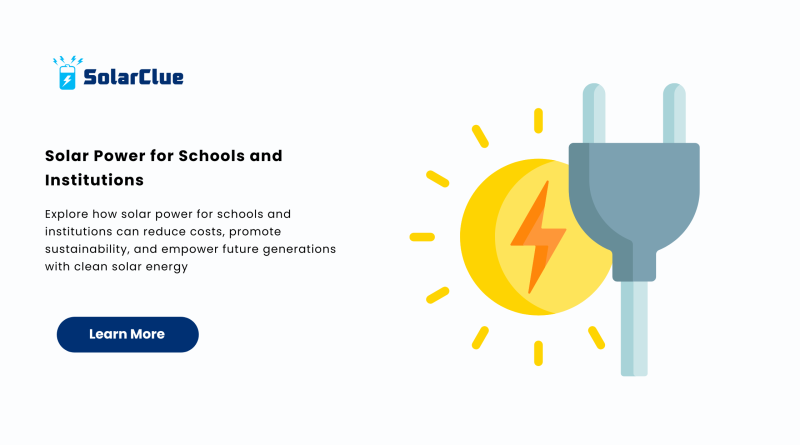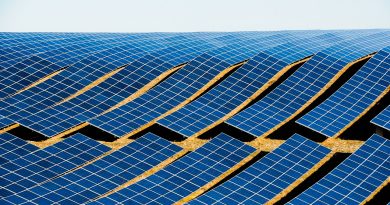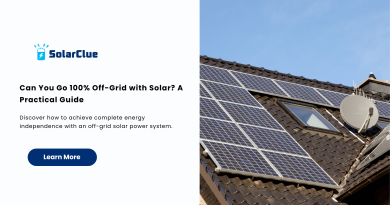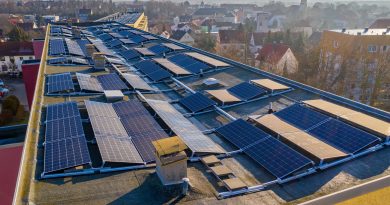Solar Power for Schools and Institutions
As energy costs rise and environmental awareness grows, schools and institutions are increasingly turning to solar power as a long-term, sustainable solution. Whether it’s a small rural school or a sprawling university campus, integrating solar energy reduces electricity bills, enhances energy independence, and contributes to a cleaner planet. This article explores why Solar Power for Schools and Institutions is not just a trend but a smart investment in the future.
Table of Contents
- 1 Why Solar Power Makes Sense for Schools and Institutions
- 2 How Solar Power Systems Work in Educational Settings
- 3 Key Benefits Beyond Cost Savings
- 4 Real-World Success Stories
- 5 Steps to Implement Solar Power in Your Institution
- 6 Overcoming Common Concerns
- 7 Additional Benefits to Consider
- 8 Final Thoughts
Why Solar Power Makes Sense for Schools and Institutions
1. Cut Electricity Costs Significantly
One of the strongest reasons schools and institutions adopt solar power systems is cost reduction. Educational institutions operate for long hours during the day, which aligns perfectly with the peak generation period of solar panels. Over time, this results in substantial savings on electricity bills, allowing funds to be redirected toward academics, infrastructure, or student services.
2. Promote Sustainability and Environmental Responsibility
Educational institutions play a vital role in modeling responsible behavior. By switching to solar energy, schools can significantly reduce their carbon footprint, demonstrating leadership in climate action. This also aligns with global and national policies pushing for cleaner energy alternatives.
3. Support Green Curriculum and Student Learning
Installing solar panels offers more than just energy—it serves as a living lab. Students gain first-hand insights into solar energy systems, helping them understand physics, engineering, and sustainability. These real-world applications make learning more engaging and relevant to current global challenges.
How Solar Power Systems Work in Educational Settings
1. Components of a Solar Power System
A basic solar power system includes solar panels, inverters, racking structures, monitoring devices, and sometimes storage batteries. The panels capture sunlight and convert it into DC power, which is then converted to AC power through inverters to run appliances and systems within the institution.
2. Grid-Tied vs. Off-Grid Solutions
Most schools choose grid-tied systems that allow excess energy to be sent back to the grid, offering credits or compensation. Off-grid setups are beneficial in remote areas where conventional electricity is either unreliable or unavailable.
3. Maintenance and Longevity
Solar panels require minimal maintenance—just regular cleaning and occasional inspections. Most systems last 25–30 years and include warranties for performance and equipment, making them a reliable long-term asset.
Key Benefits Beyond Cost Savings
1. Energy Independence and Security
By generating their own power, institutions are less vulnerable to grid outages or rising utility prices. This energy independence is especially beneficial during summer months or in areas with unstable electricity supply.
2. Enhanced Institutional Reputation
Schools that invest in solar energy demonstrate commitment to sustainability and innovation. This can improve the institution’s public image, attract environmentally conscious students and staff, and even qualify for awards or green certifications.
3. Take Advantage of Government Incentives
Many governments offer tax credits, rebates, and grants to make solar power adoption more affordable. Institutions can also explore Power Purchase Agreements (PPAs) or leasing options that minimize upfront costs.
Real-World Success Stories
1. California’s School Districts Lead the Way
California has been a pioneer in school-based solar power projects. Districts like San Diego Unified and Los Angeles Unified have saved millions annually by transitioning to solar energy, funds that are reinvested into educational programs.
2. Indian Institutions and Solar Transformation
India’s solar mission has led many public and private institutions to install solar panels. Institutes like IITs and government schools are now partly or fully powered by solar, contributing to the country’s clean energy goals.
3. African Universities Going Off-Grid
In parts of Africa, universities leverage solar power systems to maintain consistent power supply, particularly where national grids are unreliable. These systems have improved learning conditions and supported digital education efforts.
Steps to Implement Solar Power in Your Institution
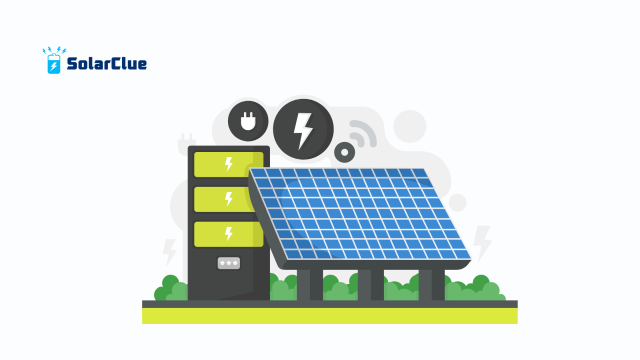
1. Conduct a Site Audit
A professional energy audit evaluates current power usage, available roof space, and sunlight exposure. This data is crucial to designing a system that meets specific needs.
2. Choose a Trusted Solar Provider
Partner with a reputable installer experienced in working with educational institutions. Look for providers that offer end-to-end services including design, permits, installation, and maintenance.
3. Customize the Solution
Every institution is unique. Whether it’s rooftop solar panels, carports, or ground-mounted systems, your provider should tailor the setup to maximize performance and cost-efficiency.
Overcoming Common Concerns
1. High Initial Costs
Although the upfront investment may seem high, institutions often recoup these costs within 5–7 years through energy savings. Additionally, government incentives and financing options significantly reduce initial outlay.
2. Limited Space
If roof space is insufficient, consider alternative installations such as ground mounts or solar canopies over parking areas. Shared solar or community solar options are also gaining traction.
3. Weather and Performance
Modern solar panels are highly efficient, even under cloudy conditions. Moreover, most systems are connected to the grid, ensuring consistent power supply regardless of weather.
Additional Benefits to Consider
1. Boost to Student Enrollment and Staff Retention
Institutions known for sustainability often attract like-minded students and faculty. Going green can give schools a competitive edge in student and talent acquisition.
2. Opportunities for Research and Collaboration
Adopting solar power opens doors for academic partnerships, research grants, and innovation hubs focused on renewable energy technologies.
3. Future-Proofing the Institution
As fossil fuel prices continue to fluctuate and carbon regulations tighten, solar power systems position institutions to thrive in a greener economy.
Final Thoughts
The transition to Solar Power for Schools and Institutions is more than just a technological upgrade—it’s an investment in education, sustainability, and future generations. By reducing operational costs and environmental impact, schools can focus more on delivering quality education while being responsible stewards of the planet.
FAQs
1. How much can schools save by using solar power?
Schools can save up to 50–75% on energy bills depending on location, consumption, and system efficiency.
2. Are solar panels safe for schools?
Yes, modern solar panels are extremely safe and installed according to strict regulatory guidelines.
3. What is the lifespan of a solar system?
Most solar power systems last between 25–30 years and come with performance warranties.
4. Can schools without large roofs still use solar?
Absolutely. Options like ground-mounted systems, carports, and community solar programs offer alternatives.
5. Are there subsidies for installing solar power in schools?
Yes. Many state and central governments offer financial incentives including rebates, tax benefits, and grants.
🌞 Ready to bring sunshine into your classrooms and save big on energy bills? Visit us today at solarclue.com and check out expert tips and resources on blog.solarclue.com to begin your solar journey in the most rewarding way possible!

